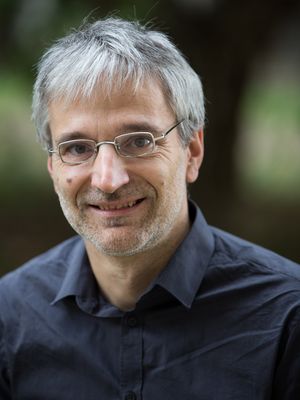A photograph striated with white stripes, damaged, illegible... A fatality? Maybe not. Ugo Boscain and Mario Sigalotti, permanent members of the GECO team from the Inria Saclay – Île-de-France centre, have developed geometric control technology enabling the full reconstitution of these incomplete images. For this, they use a biomimetic algorithm that reproduces the functioning of the primary visual cortex of mammals. A very promising perspective for several sectors of activity where the reading of images is vital: medical imaging, security, the neurosciences and also documentation.
An "artificial visual cortex"
The research leading to this technology was funded, six years ago, by an ERC grant awarded to Ugo Boscain. Since then, the GECO team has refined its software program. However, the researchers are today faced with a series of technical problems and must develop their process further. "In order to reconstruct a small, simple image, we need to set a very large number of parameters. This represents, in total, half a day's work", the researcher explains.We therefore need to design a tool capable of reconstructing any image in real time. "This is impossible on a traditional computer. We therefore want to create a machine that is specially adapted to these calculations." Ugo Boscain defines this new computer as an "artificial visual cortex". Built like an integrated circuit, it will facilitate the recognition and reconstruction of images - but that's not all. "We then plan to work on corrupted sounds, because in a way the auditive cortex functions like the visual cortex."
Adding commercial value to the technology
A few months ago, the GECO team received a second ERC grant, a "Proof of concept" grant, whose aim is to help researchers to add value to their findings. "This grant will not fund our research," Ugo Boscain points out. We are going to use it to manage questions of intellectual property for our work. And, above all, we are going to begin market research, test the product in order to find contacts and companies interested in our project. “The team is giving itself 18 months to find an industrialist prepared to fund this "artificial cortex".
